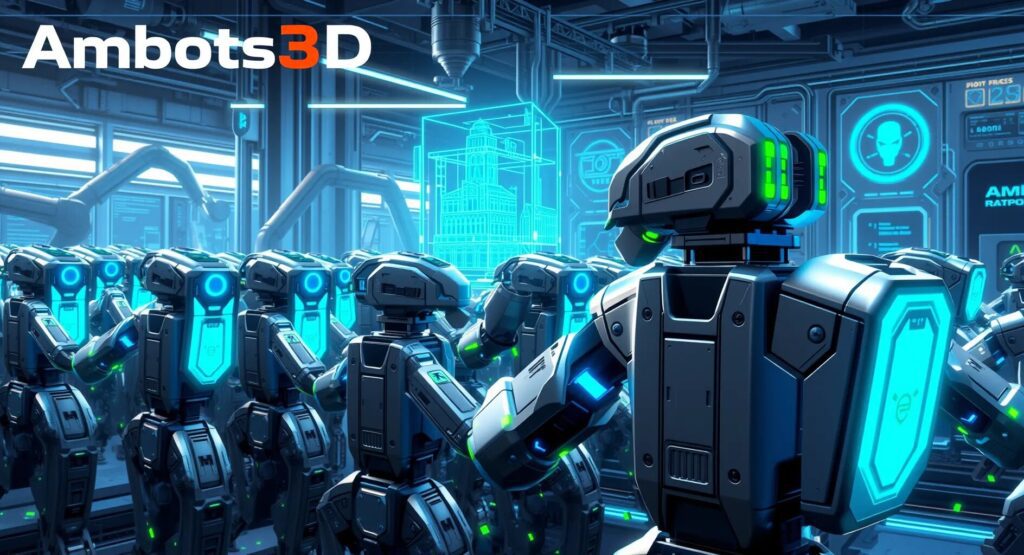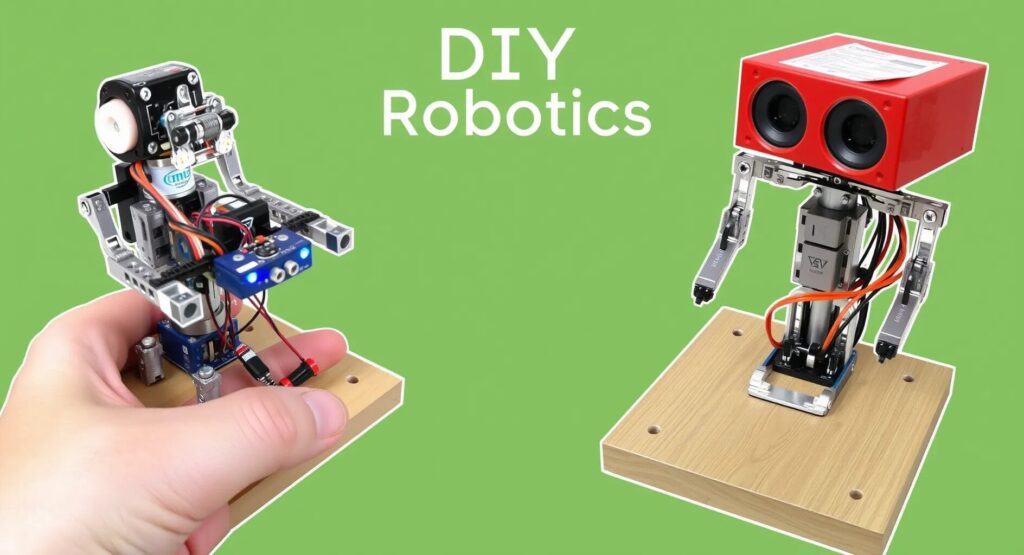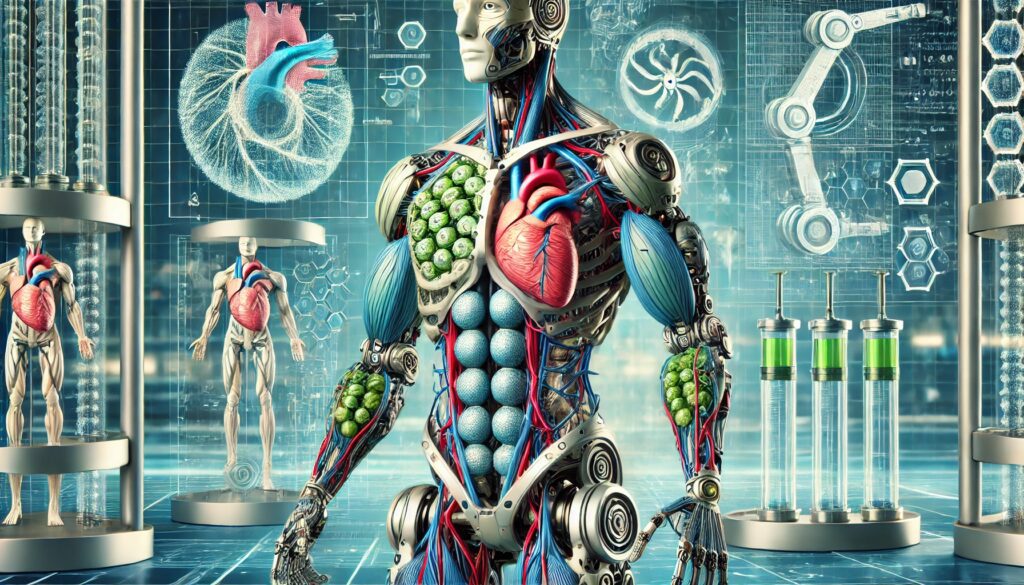
In a world where technological advancements often outpace our ability to fully comprehend their potential, one company is making waves with an innovation that could redefine manufacturing and beyond. Ambots3D, a pioneer in swarm robotics, is not just pushing the envelope—they’re tearing it open. But what exactly is swarm robotics, and how does Ambots3D harness this cutting-edge technology to revolutionize industries?
What is Swarm Robotics?
Imagine a colony of ants. Each one, on its own, might seem insignificant, but together, they accomplish incredible feats. This is the principle behind swarm robotics. Instead of relying on a single, highly sophisticated robot to perform complex tasks, swarm robotics employs a large number of simpler, autonomous robots that work together, just like ants. The collective intelligence of these robots allows them to tackle tasks that would be impossible for a lone machine.
Ambots3D leverages this concept by designing swarms of robots that can communicate and coordinate with each other to achieve a common goal. The result is a flexible, scalable system capable of tackling complex manufacturing tasks with remarkable efficiency.
The Mechanics Behind the Magic: How Swarm Robotics Work
At the core of Ambots3D’s technology lies the intricate dance of synchronization and communication. Each robot in the swarm is equipped with sensors and processors that allow it to assess its environment, share information with other robots, and make decisions in real-time. But how do these robots avoid chaos when working together?
Distributed Intelligence
One of the key features of swarm robotics is distributed intelligence. Unlike traditional robotics, where a central computer controls all the actions, swarm robots operate autonomously. They follow simple rules and base their decisions on local information. If one robot detects an obstacle, it changes its course and signals nearby robots to do the same. This decentralized approach makes the swarm more resilient—if one robot fails, the others can continue without missing a beat.
Communication and Coordination
While the robots operate independently, their success hinges on effective communication. Ambots3D employs a sophisticated communication protocol that enables robots to share data seamlessly. This real-time communication ensures that every robot knows what the others are doing, allowing the swarm to act as a unified entity. Imagine dozens of robots 3D printing a complex structure—each one knows exactly where to add material, adjusting on the fly as the structure takes shape.
Overcoming the Challenges: Synchronizing the Swarm
Of course, synchronizing a swarm of robots is no easy feat. There are significant challenges that Ambots3D has had to overcome to make this technology viable.
Latency and Speed of Communication
One of the biggest hurdles is ensuring that communication between robots is fast enough to avoid delays. Even a slight lag can throw the entire swarm off course. Ambots3D has developed a low-latency communication system that allows robots to exchange information almost instantaneously. This precision is crucial when multiple robots work in close proximity, as in many manufacturing scenarios.
Collision Avoidance
When you have dozens or even hundreds of robots working in the same space, the risk of collisions is high. Ambots3D’s robots are equipped with advanced proximity sensors and algorithms that help them avoid each other. The robots are programmed to prioritize movement paths, ensuring smooth operation even in tight spaces.
Scalability
Another challenge is scalability. How do you manage a swarm when it grows from a handful of robots to hundreds? Ambots3D’s approach is modular. New robots can be added to the swarm without needing to reconfigure the system. Each robot can join the swarm and immediately begin communicating with the others, making it possible to scale operations quickly and efficiently.
Beyond Car Manufacturing: The Potential of Swarm Robotics
While the immediate applications of Ambots3D’s technology are evident in manufacturing—particularly in car production, where precision and efficiency are paramount—the potential uses for swarm robotics extend far beyond this industry.
Construction
In the construction industry, swarm robotics could revolutionize the way buildings are erected. Imagine a swarm of robots assembling a skyscraper, each robot adding materials, laying bricks, or even welding steel beams with unparalleled precision. This could reduce construction times and costs significantly.
Disaster Response
Swarm robots could play a crucial role in disaster response. In scenarios like earthquakes or fires, where human access is limited, a swarm of robots could be deployed to search for survivors, deliver supplies, or even stabilize structures. The ability to operate autonomously and communicate in real-time makes them ideal for these dangerous environments.
Agriculture
In agriculture, swarm robotics could be used for everything from planting seeds to harvesting crops. The robots could work together to ensure that fields are planted and harvested with maximum efficiency, adjusting their actions based on real-time data about soil conditions, weather, and crop health.
From Prototype to Reality: Can Swarm Robotics Mass-Produce Cars?

The Promise of Swarm Robotics in Car Manufacturing
At its core, swarm robotics involves deploying a large number of relatively simple robots that can communicate and coordinate their actions to perform tasks collectively. In car manufacturing, this could mean robots working together to weld, assemble, paint, and even inspect vehicles with a level of efficiency and adaptability that traditional assembly lines struggle to match.
In theory, the benefits are substantial. Swarm robots can operate around the clock, scale production up or down depending on demand, and adapt to new models or production changes with minimal reconfiguration. These advantages make swarm robotics an attractive proposition for the automotive industry, where flexibility, speed, and precision are key.
Technological Hurdles: Turning Theory into Practice
While the potential is enormous, the technological challenges of scaling swarm robotics from prototypes to full-scale production are daunting.
1. Coordination and Synchronization:
One of the most significant technological challenges is ensuring seamless coordination among hundreds or even thousands of robots. Each robot must be aware of its surroundings, including the positions and actions of its peers, to avoid collisions and ensure that tasks are completed efficiently. Achieving this level of synchronization requires sophisticated algorithms, real-time data processing, and robust communication systems.
2. Reliability and Redundancy:
For swarm robotics to be viable in a production environment, the system must be highly reliable. A failure in one robot should not halt the entire production line. Building redundancy into the system—where other robots can quickly adapt and compensate for any malfunctioning unit—is critical. This requires advanced machine learning algorithms capable of real-time problem-solving and decision-making.
3. Integration with Existing Systems:
Car manufacturing is a highly complex process involving numerous systems, from supply chain logistics to quality control. Integrating swarm robotics into these existing systems without disrupting production is a significant hurdle. This includes ensuring that swarm robots can work alongside human workers and other automated systems, seamlessly fitting into the broader production ecosystem.
Logistical Challenges: Scaling Up Production
Even if the technological challenges are overcome, the logistics of scaling swarm robotics to mass production levels present another set of difficulties.
1. Infrastructure Requirements:
Swarm robotics requires a manufacturing environment specifically designed to accommodate the technology. This might involve reconfiguring factories to allow for the optimal movement of robots, installing advanced communication networks, and ensuring that the environment is conducive to the smooth operation of autonomous systems. The initial infrastructure investment could be substantial, particularly for legacy manufacturers.
2. Supply Chain Coordination:
The success of mass production hinges on a well-coordinated supply chain. In a swarm robotics-driven factory, ensuring that all necessary parts and materials arrive on time and are correctly distributed to the swarm can be complex. Any delay or miscommunication can lead to production bottlenecks, reducing the efficiency gains offered by swarm robotics.
3. Workforce Transition:
A shift to swarm robotics doesn’t just change the factory floor—it also impacts the workforce. Workers will need to transition from traditional roles to new positions that focus on robot maintenance, programming, and system oversight. Managing this transition smoothly, including providing adequate training and addressing potential job displacement concerns, is a logistical challenge that companies must navigate carefully.
Economic Considerations: Is It Financially Feasible?
Beyond technology and logistics, the economics of scaling swarm robotics for car manufacturing are perhaps the most critical factor.
1. Initial Investment:
The upfront costs of implementing swarm robotics are likely to be high. This includes research and development, purchasing or retrofitting factories with the necessary infrastructure, and training the workforce. Companies must weigh these costs against the long-term benefits, such as increased efficiency, reduced labor costs, and faster production times.
2. Return on Investment (ROI):
For swarm robotics to be financially viable, the return on investment must justify the initial outlay. This means the system needs to deliver significant cost savings, either through reduced labor costs, increased production speeds, or lower error rates. However, the ROI might not be immediately apparent, particularly in the early stages of implementation, when teething problems are likely to occur.
3. Market Demand and Scalability:
Finally, the economic feasibility of swarm robotics depends on market demand. The automotive industry is highly cyclical, with fluctuating demand for vehicles. For swarm robotics to make economic sense, it must be scalable enough to handle both peak production periods and slowdowns without incurring excessive costs. This requires a level of flexibility that is still being perfected in prototype stages.
The Road Ahead: From Prototype to Production Line
The journey from prototype to full-scale production in swarm robotics is challenging, but not impossible. The technology has the potential to revolutionize car manufacturing, offering unprecedented levels of flexibility, efficiency, and scalability. However, for this potential to be realized, significant technological, logistical, and economic hurdles must be overcome.
In the coming years, we’re likely to see continued advancements in swarm robotics, with companies like Ambots3D leading the way. As these technologies mature, they will gradually move from small-scale prototypes to full production lines. The transition will not happen overnight, but the foundation is being laid for a future where swarm robotics could indeed mass-produce cars, reshaping the automotive industry in the process.
The question isn’t just whether swarm robotics can mass-produce cars, but rather, when it will become a reality. As the industry continues to innovate, the promise of fully autonomous, swarm-driven car manufacturing edges closer to becoming not just a possibility, but an inevitability.
The Ethical Dilemma of Fully Autonomous Manufacturing: What Happens to Human Jobs?
As the march toward full automation in manufacturing accelerates, we’re faced with a pressing question: what happens to human jobs? The rise of technologies like swarm robotics promises unparalleled efficiency and precision, but it also brings an ethical dilemma that we can’t ignore—the displacement of human workers.
The Automation Revolution
Manufacturing has been automating for decades, with robots taking over repetitive, dangerous, or high-precision tasks. However, the advent of fully autonomous manufacturing—where machines not only perform tasks but also make decisions and optimize processes—represents a seismic shift. Companies like Ambots3D are leading this charge, using swarm robotics to automate complex production lines entirely.
For businesses, the appeal is clear: reduced labor costs, increased production speed, and fewer errors. For workers, however, the outlook is less rosy. As robots become more capable, the need for human intervention decreases, leading to potential job losses across the industry.
The Human Cost
The ethical concerns surrounding full automation are deeply tied to the potential loss of jobs. Manufacturing has historically provided stable employment for millions of people worldwide. What happens when machines take over?
Job displacement is a significant concern. Workers who have spent years honing their skills in manufacturing may find themselves suddenly obsolete. While some may transition to new roles—such as overseeing and maintaining the robotic systems—others may struggle to adapt, particularly if they lack access to retraining programs.
Moreover, there’s the issue of economic inequality. As automation reduces the need for human labor, the benefits often accrue to the owners of the technology, exacerbating the wealth gap. The question then becomes: how do we ensure that the gains from automation are shared broadly, rather than concentrated in the hands of a few?
Rethinking the Workforce
One potential solution is to focus on reskilling. As certain jobs become automated, new roles will emerge that require different skill sets—especially in robotics maintenance, programming, and AI management. Companies can play a role in this transition by investing in training programs for their workforce, ensuring that employees can move into these new positions.
Universal basic income (UBI) has also been proposed as a way to address the displacement caused by automation. By providing a safety net, UBI could help workers transition between jobs or even pursue education and training without the immediate pressure of finding work.
Another approach is to consider ethical automation—a model where companies deliberately limit the extent of automation to preserve jobs. This approach prioritizes social responsibility over maximum efficiency, ensuring that workers remain an integral part of the manufacturing process.
The Future of Work
The ethical implications of fully autonomous manufacturing are complex, and there’s no one-size-fits-all solution. However, it’s clear that as we move towards greater automation, we must also consider the human impact. This includes not only providing opportunities for retraining and upskilling but also ensuring that the benefits of automation are shared across society.
Ultimately, the goal should be to create a future where technology enhances human capabilities rather than replaces them. By taking a thoughtful, inclusive approach to automation, we can build a world where both humans and robots thrive side by side.
Conclusion: The Future is Swarming
Ambots3D is not just innovating within the realm of robotics—they’re redefining how we think about automation, collaboration, and efficiency. By harnessing the power of swarm robotics, they’ve opened the door to a future where robots work together seamlessly to achieve what was once thought impossible.
Whether it’s in manufacturing, construction, disaster response, or agriculture, the potential applications of this technology are vast and varied. As Ambots3D continues to refine and expand its capabilities, it’s clear that swarm robotics is not just a glimpse of the future—it’s here, and it’s changing the game.
Coursera – Robotics Specialization
- A comprehensive series of courses covering the fundamentals of robotics, including swarm robotics.
Visit Coursera





